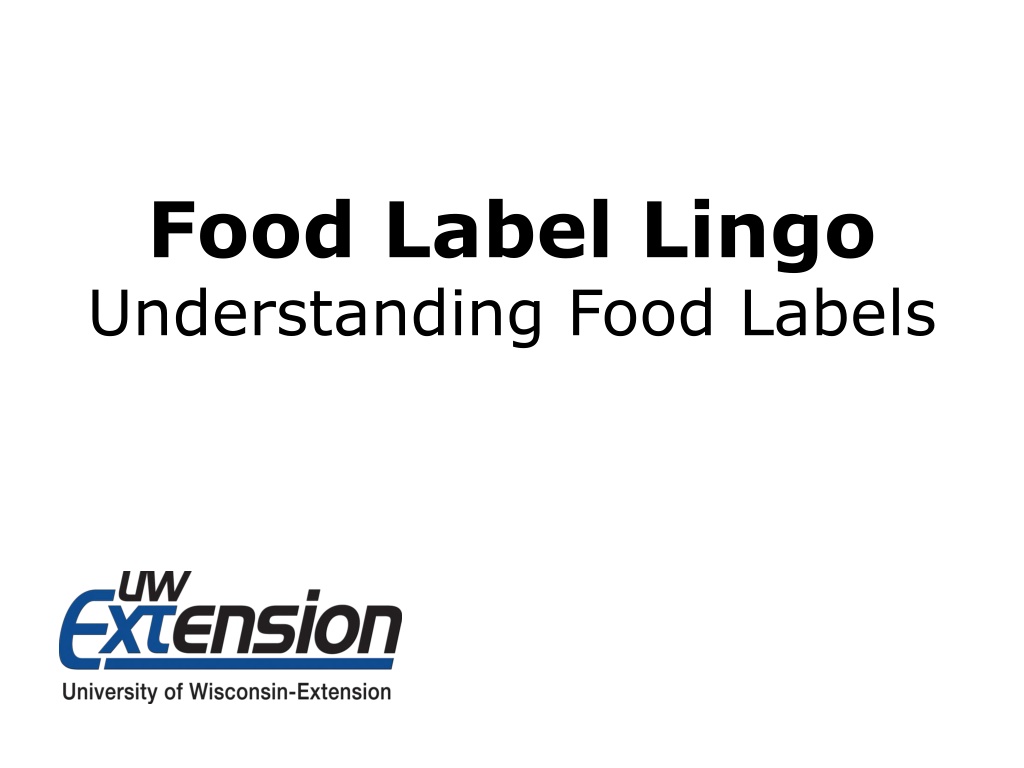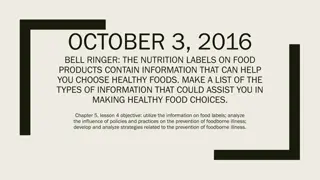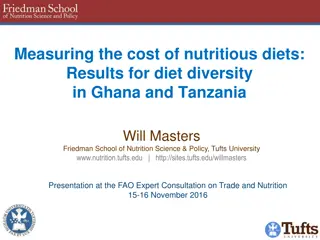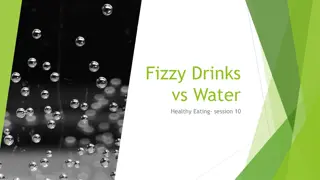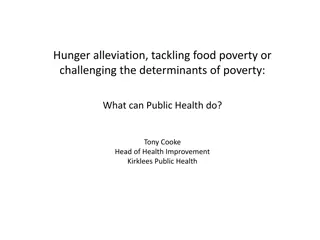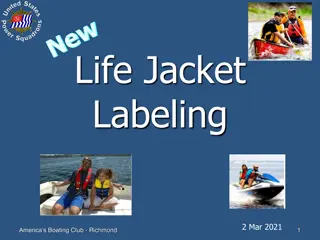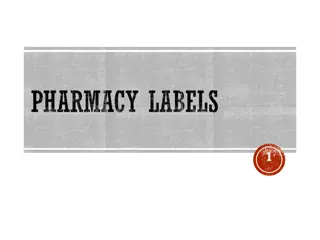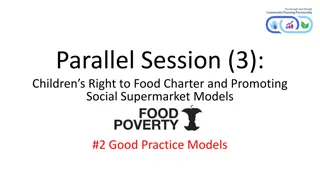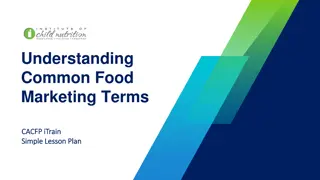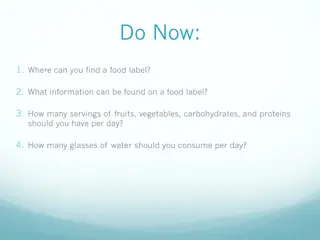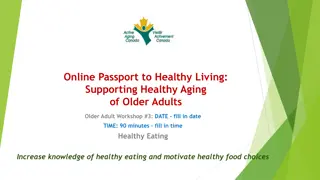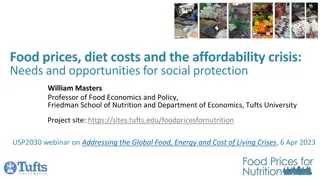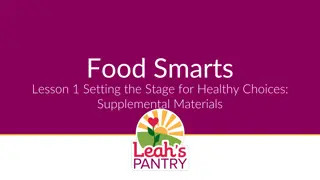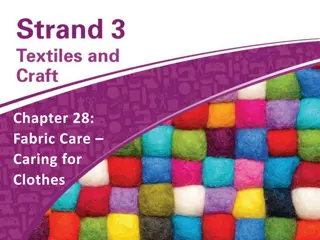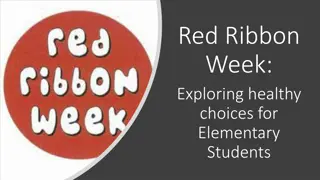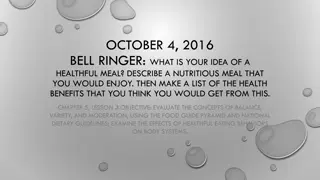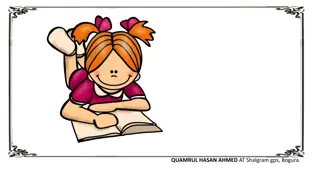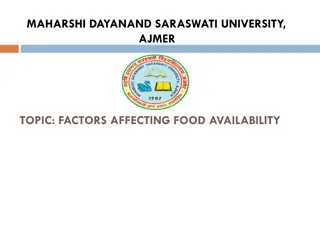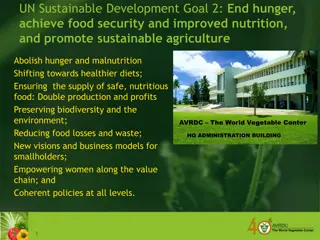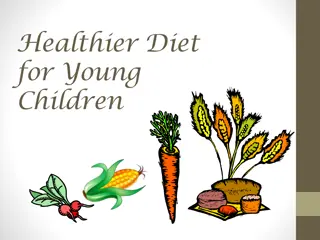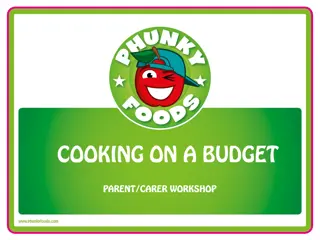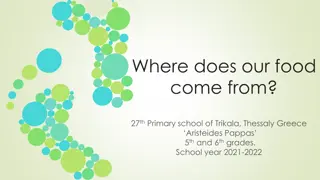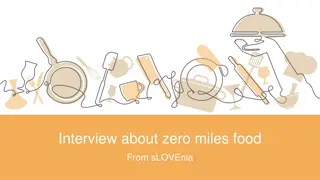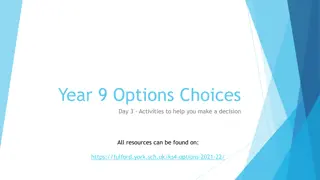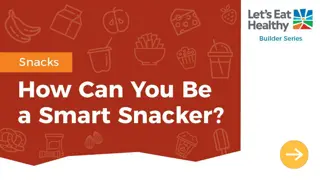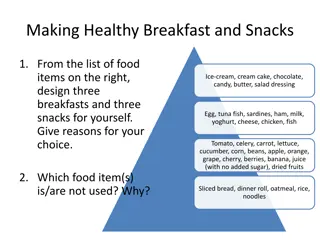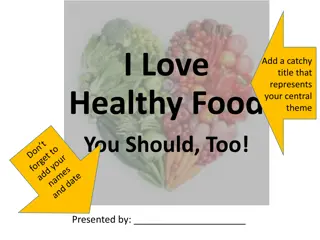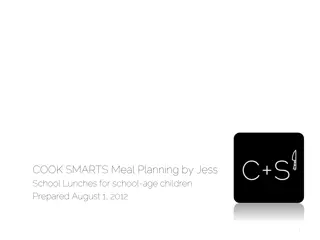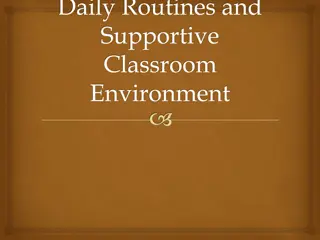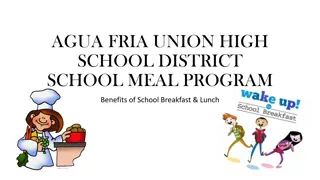Understanding Food Labels: A Guide to Making Nutritious Choices
Learn how to identify and understand the different parts of a food label to empower yourself in making nutritious decisions. Explore the significance of food labels, decipher serving sizes, and enhance your everyday food-related choices.
Download Presentation

Please find below an Image/Link to download the presentation.
The content on the website is provided AS IS for your information and personal use only. It may not be sold, licensed, or shared on other websites without obtaining consent from the author. Download presentation by click this link. If you encounter any issues during the download, it is possible that the publisher has removed the file from their server.
E N D
Presentation Transcript
Food Label Lingo Understanding Food Labels
Food Label Lingo Come and learn how to identify and understand the different parts of a food label. The resources and actionable tips gained will help you speak food label lingo and empower you to make nutritious decisions that will lead to lifelong healthy eating habits.
Goals for today! I can identify what a food label is I can identify the parts/components of a food label I understand all the parts/components of the food label I can identify, explain and demonstrate how I would use food labels at home and in everyday food situations.
Eating Nutritious: Choose My Plate Eat colorful Incorporate all food groups in your diet
Did you? Read a food label already today? Eat something today with a food label on it? How easy is it to determine a serving size?
Food Label Icebreaker Using the food product on the table First glance is this a healthy choice for a snack? Measure out how much you normally would eat Guess what the serving size would be
Nutritious Value of Popcorn Serving Size: 1 cup popped 20 calories 0g fat (in popped) 28g carbohydrates 5g of dietary fiber 4g of protein What do we add to popcorn that makes this a less nutritious snack?
What is a food label? It is a resource found on packaged foods containing nutritional facts about the food item Not all food items have food labels Do we know some examples?
How do I read a food label? Identify each part of the food label Understand each of the parts What do they mean? What are the numbers? How does this label fit within my everyday nutritious eating?
Parts of a Food Label
What does each part mean? Serving Size Helps with portion control Amount of calories Keeping track of calories will help you manage your weight The amount of calories you eat should balance how many calories you are using
What does each part mean? Limit these nutrients We often eat too much of these nutrients. Limit the amount. Stay below the Daily Value listed on bottom of label Get enough of these nutrients We often don t consume enough of these nutrients. Be sure to include them in your daily diet Percent (%) daily value: This percent will tell you how much it will contribute to your TOTAL daily diet Quick Guide 5% of DV or less is low and 20% or more is high
Ingredients on the Food Label Identify if the food is nutritious Look for Nutritious foods listed first Examples: Whole Wheat Flour, tomatoes, corn, beef, chicken Try to limit the amount of additives and preservatives No additives or preservatives listed first Examples: Salt, sugar, MSG, artificial colors
How can I use in everyday food situations? Portion control Follow serving sizes listed and only eat that amount Example: cup cereal. Measure out cup instead of pouring a bowl full Total calorie intake How many calories are you eating each day? Ingredients Identifying the better nutrition option At store compare the two products Compare nutrition values and ingredients
What can the food label do for you? Assists with overall control of portion sizes Assists with receiving all the food groups and receiving adequate nutrients Identify quality nutritious products Children Role model positive eating habits Combat obesity Ages 9-13 is when they start making food decisions
Nutritious Meals When Packing a Lunch Shaking Down Sodium When Choosing Snacks Handouts are phrased for kids Information is valuable for adults
What do the dates mean on foods? Best Buy Dates Lose quality over time The food is at its best before the date Expiration Dates Food loses quality Change in appearance and texture Examples: Dairy products and meat products
Food Safety of Products Food labels are on all packaged products Look for Dents Open packaging Current Dates
Speaking Food Label Lingo Labels are one resource to help you Choose and eat more nutritious foods Control your portion control Remember parts when In grocery store At home Out to eat
Check out www.fda.gov/nutritioneducation For more information on Food Labels Resources for parents and kids
UW-Extension Family Living To find out more information about Family Living www.facebook.com/UWExtensionFamilyLiving http://flp.ces.uwex.edu/ Food Label Lingo materials developed by Sarah Siegel, Family Living Educator, Wood County UW-Extension , 2015 University of Wisconsin, U. S. Department of Agriculture and Wisconsin counties cooperating. An EEO Affirmative Action employer, the University of Wisconsin - Extension provides equal opportunities in employment and programming including Title IX and American with Disabilities (ADA) requirements.
